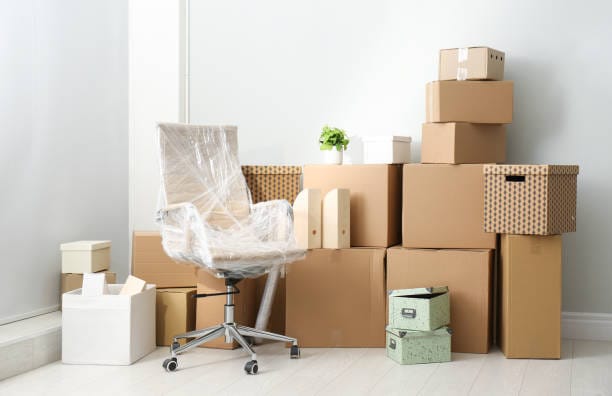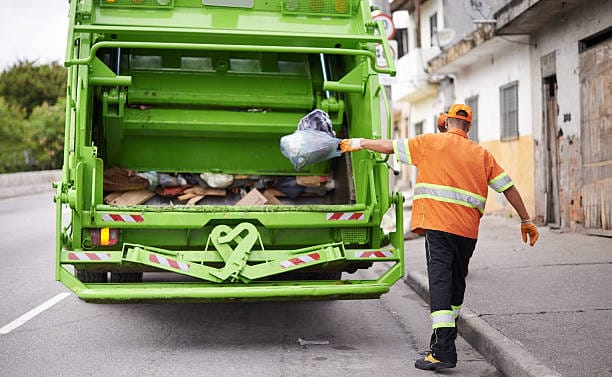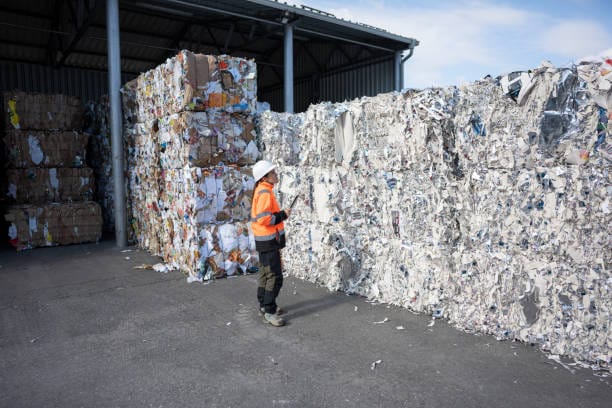When you’re moving, downsizing, or simply in need of extra space, furniture storage can become an essential part of the process. Whether you’re keeping your furniture safe during a move or need long-term storage, choosing the right solution can make all the difference in keeping your belongings protected. But why should you opt for secure storage instead of just any facility? In this article, we’ll explore the importance of secure furniture storage, how to choose the right facility, and provide some tips to ensure your belongings stay in pristine condition.
Why Furniture Needs Secure Storage
Furniture needs secure storage to protect it from damage, dust, moisture, and potential theft during a move, renovation, or long-term storage. Delicate or valuable items like antiques, upholstered furniture, or fragile pieces require extra care to prevent scratches, stains, or structural damage. Secure storage also ensures that your furniture remains organized and easily accessible when needed, reducing the risk of it being misplaced or damaged in a cluttered environment. Using a safe, climate-controlled storage unit or a secure, dedicated space guarantees that your furniture is kept in optimal condition until it’s ready to be used again.
Protection from Damage
Furniture can be an investment, and if not stored properly, it can quickly deteriorate. Secure storage offers the protection your belongings need, preventing them from exposure to damage from dust, moisture, pests, or accidental bumps and scratches. Choosing a secure storage facility helps reduce the risk of any harm to your valuable furniture.
Climate Control for Sensitive Items
Certain types of furniture, like wooden pieces, leather chairs, or upholstered sofas, can be sensitive to environmental factors. Humidity, temperature fluctuations, and poor air circulation can cause damage like warping, fading, or mildew. Climate-controlled storage ensures that the temperature and humidity levels are kept in a safe range, making it perfect for delicate or high-value items.
Types of Furniture Storage Solutions
There are several types of furniture storage solutions to suit different needs. Self-storage units offer flexible, secure options for long-term or short-term storage, with varying sizes to accommodate everything from small furniture to larger pieces. Climate-controlled storage is ideal for delicate or high-value furniture, such as antiques or upholstered items, as it protects them from temperature fluctuations and humidity. Portable storage containers provide a convenient solution for on-site storage, allowing you to load and unload furniture at your own pace. For those with limited space at home, on-site storage such as a garage or attic can be an option, though it’s important to ensure the space is clean, dry, and secure. Each option offers different benefits based on the duration and nature of the storage needed.
Short-Term vs. Long-Term Storage Options
When looking for storage, it’s important to consider how long you need the space. If you’re storing furniture during a move, short-term storage might be more appropriate. On the other hand, if you’re holding onto furniture while renovating your home or downsizing for a while, long-term storage might be more suitable.
Indoor vs. Outdoor Storage Units
Indoor storage units are typically the best option for protecting furniture from the elements, theft, or vandalism. They are often climate-controlled and offer added protection. Outdoor storage, while often more affordable, may be exposed to the elements and may not be as secure for valuable items.
Features to Look for in a Secure Furniture Storage Facility
When selecting a secure furniture storage facility, look for key features such as 24/7 surveillance and alarm systems to ensure constant monitoring and prevent unauthorized access. The facility should have climate-controlled units to protect sensitive furniture from extreme temperatures and humidity. Cleanliness and pest control are also crucial to maintain the condition of your items. Choose a facility that offers flexible rental terms to accommodate your storage needs, whether short-term or long-term. Additionally, ensure easy access to your storage unit, with wide aisles for moving large items, and reliable customer support to assist with any issues. These features will help keep your furniture safe, well-maintained, and accessible when needed.
24/7 Surveillance and Security Systems
One of the most important factors in securing your furniture is ensuring that the storage facility has robust security measures. Look for facilities with 24/7 surveillance, gated access, and security personnel. A secure facility should also offer individually alarmed units to ensure your items are protected at all times.
Climate Control and Humidity Control
For furniture made of sensitive materials, it’s essential to store them in a climate-controlled environment. Look for storage units with temperature and humidity controls that will protect your belongings from extreme conditions. This is particularly important for items like wooden furniture, leather couches, and art pieces that can be affected by shifts in weather.
Cleanliness and Maintenance of the Facility
A clean, well-maintained storage facility reduces the risk of pests or mildew. Before committing to a storage unit, check that the facility is regularly cleaned and maintained. Avoid places that feel damp, have visible signs of rodents, or seem poorly managed.
Packing Your Furniture for Storage
Packing your furniture for storage is essential to ensure its safety and preserve its condition. Start by disassembling larger pieces, such as beds, tables, or shelves, to make them easier to transport and save space. Use high-quality moving blankets or furniture pads to cover and protect delicate surfaces from scratches and dust. For upholstered furniture, wrap it in plastic or a fabric cover to shield it from moisture and dirt. Place smaller items like cushions or pillows inside the furniture they belong to, or pack them in boxes to keep them organized. Use sturdy boxes for smaller belongings and label them clearly for easy identification. Finally, when placing your furniture in storage, ensure heavy pieces are at the bottom and lighter items on top to avoid shifting or damage.
How to Protect Furniture During Storage
To ensure your furniture remains in great condition, proper packing is key. For large items like sofas and tables, consider wrapping them in protective covers or blankets to prevent scratches and dust. Using furniture pads can also help shield corners and delicate surfaces.
Materials to Use and Steps for Proper Packing
- Furniture pads and blankets are your best bet for soft, padded protection.
- For wooden furniture, use dust sheets and ensure no direct contact with the floor.
- Consider plastic covers or stretch film for upholstered items to keep moisture and dirt at bay.
- For delicate glass furniture, pack each piece separately in bubble wrap or custom boxes for additional protection.
Benefits of Using Secure Furniture Storage
Using secure furniture storage offers several benefits, including protection from damage, dust, and moisture, which can occur during moves, renovations, or long-term storage. It provides a safe space for valuable or delicate items, such as antiques or high-quality furniture, ensuring they remain in excellent condition. Secure storage also offers peace of mind, knowing your belongings are protected by surveillance, climate control, and professional management. Additionally, it helps free up space in your home or office, allowing for more organization and reducing clutter. With flexible rental terms, secure furniture storage gives you a convenient solution to store your items as needed, whether for a short period or long-term.
Prevents Damage
Secure storage facilities protect your furniture from dust, dirt, water, pests, and other potential hazards. This is especially important for long-term storage or if you have high-value items that need extra care.
Saves Space in Your Home or Office
When you need to declutter your space temporarily or store excess furniture, secure storage allows you to clear up room without having to part with your items. Whether you’re renovating or just need some breathing room, furniture storage can be a practical solution.
Provides Peace of Mind
Knowing your furniture is safe, secure, and protected from environmental damage provides peace of mind during a stressful move or transition period.
How Long Can Furniture Be Stored Securely?
Furniture can be stored securely for as long as needed, provided it’s stored in the right conditions. For short-term storage, such as during a move or renovation, furniture can be kept for a few days or weeks without issue. Long-term storage, however, requires more attention to factors like climate control, cleanliness, and protection from pests. In a secure facility with climate control and proper care, furniture can be safely stored for months or even years. It’s important to periodically check on your items, especially for long-term storage, to ensure they remain in good condition and are not exposed to any environmental risks.
Storage Duration Options and Factors to Consider
Furniture can be stored in a secure facility for as long as you need—whether it’s a matter of weeks, months, or years. Some facilities may offer flexible contracts and pricing based on the duration of storage. When deciding how long to store your furniture, consider factors like climate conditions, accessibility needs, and your plans for retrieving the furniture.
Choosing the Right Storage Size
Choosing the right storage size is crucial to ensure your furniture and belongings are stored efficiently without wasting space or causing damage. Start by evaluating the volume and type of items you need to store, considering both the size and weight. For small furniture or a few boxes, a 5×5 or 5×10 unit might be sufficient. For larger furniture, such as couches, tables, or several rooms’ worth of items, a 10×10 or 10×15 unit may be more appropriate. It’s important to choose a unit that allows you to organize your items properly, with enough room for easy access and ventilation. Many storage facilities offer guides or assistance to help you determine the best size based on your specific needs.
How to Assess How Much Space Your Furniture Will Require
Estimating how much space you need is crucial to finding the right storage unit. Start by taking inventory of the items you plan to store and measuring larger furniture pieces. Most storage facilities offer various unit sizes, so it’s important to choose the one that best fits your needs.
Different Storage Unit Sizes and Their Uses
- Small units (5×5 or 5×10) are ideal for smaller furniture, boxes, and occasional storage needs.
- Medium units (10×10 or 10×15) can fit the contents of a one-bedroom apartment or a few larger items like couches, beds, and tables.
- Large units (10×20 or larger) are great for storing multiple rooms of furniture or oversized items.
Safety Considerations for Stored Furniture
When storing furniture, safety considerations are essential to ensure your items remain in good condition and are protected from potential damage. First, choose a secure storage facility with features like surveillance cameras, alarm systems, and proper access control to prevent theft or unauthorized access. For climate-sensitive furniture, such as wood or upholstered pieces, opt for climate-controlled storage to protect against humidity, temperature fluctuations, and mold. Properly pack and protect your furniture using moving blankets, bubble wrap, or covers to shield it from dust, scratches, or physical damage. Additionally, make sure furniture is stored off the ground, especially in long-term storage, to avoid contact with moisture or pests. Regularly inspect your items if possible, ensuring they are safe and well-maintained during the storage period.
Fire Safety, Pests, and Environmental Factors
Secure furniture storage not only protects your items from theft but also from other safety hazards like fire, moisture, or pests. Look for storage facilities that adhere to fire codes and take steps to prevent pests and mildew. Some advanced storage facilities even provide fire-resistant storage options for additional protection.
Pricing for Secure Furniture Storage
Pricing for secure furniture storage varies depending on factors such as the size of the storage unit, location, and any additional features like climate control. On average, basic self-storage units can cost anywhere from $50 to $200 per month, depending on the unit size and the facility’s location. Climate-controlled storage tends to be more expensive, typically ranging from $150 to $400 per month, due to the added protection for delicate items. For short-term storage, some facilities may offer discounted rates or special promotions. Additional costs may include a one-time administration fee, insurance for valuable items, or delivery and pickup charges for portable storage units. It’s important to compare prices and services from different storage providers to find the best value for your needs.
How Pricing is Determined
Pricing for storage units varies based on size, location, and special features like climate control or enhanced security. On average, secure storage can range from $50 to $300 per month depending on the unit size and location. Always compare prices and read the fine print to ensure there are no hidden fees.
Cost-Saving Tips for Furniture Storage
- Book in advance: Early booking can sometimes offer discounted rates.
- Opt for longer-term contracts: Many facilities offer discounts for long-term storage agreements.
- Downsize the unit: If you can, pack efficiently and consider a smaller storage unit.
FAQs
How do I know if my furniture will be safe in storage?
Choose a facility with strong security systems (24/7 surveillance, alarmed units), cleanliness, and climate control for optimal safety. Always check customer reviews and ask about the facility’s safety record.
Can I access my furniture whenever I want?
Many storage facilities allow you to access your items at any time during business hours. Some even offer 24/7 access, though this typically comes with an extra charge.
How do I choose the right size storage unit for my furniture
Use a storage calculator or consult with the facility staff to get an estimate of how much space you’ll need. Start by listing the furniture items you plan to store and consider the overall volume





